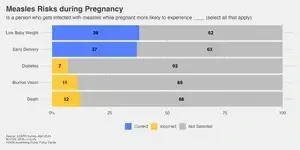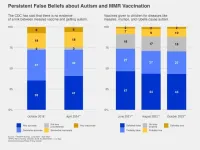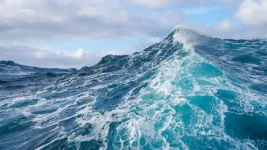(Press-News.org) As they seep and calve into the sea, melting glaciers and ice sheets are raising global water levels at unprecedented rates. To predict and prepare for future sea-level rise, scientists need a better understanding of how fast glaciers melt and what influences their flow.
Now, a study by MIT scientists offers a new picture of glacier flow, based on microscopic deformation in the ice. The results show that a glacier’s flow depends strongly on how microscopic defects move through the ice.
The researchers found they could estimate a glacier’s flow based on whether the ice is prone to microscopic defects of one kind versus another. They used this relationship between micro- and macro-scale deformation to develop a new model for how glaciers flow. With the new model, they mapped the flow of ice in locations across the Antarctic Ice Sheet.
Contrary to conventional wisdom, they found, the ice sheet is not a monolith but instead is more varied in where and how it flows in response to warming-driven stresses. The study “dramatically alters the climate conditions under which marine ice sheets may become unstable and drive rapid rates of sea-level rise,” the researchers write in their paper.
“This study really shows the effect of microscale processes on macroscale behavior,” says Meghana Ranganathan PhD ’22, who led the study as a graduate student in MIT’s Department of Earth, Atmospheric and Planetary Sciences (EAPS) and is now a postdoc at Georgia Tech. “These mechanisms happen at the scale of water molecules and ultimately can affect the stability of the West Antarctic Ice Sheet.”
“Broadly speaking, glaciers are accelerating, and there are a lot of variants around that,” adds co-author and EAPS Associate Professor Brent Minchew. “This is the first study that takes a step from the laboratory to the ice sheets and starts evaluating what the stability of ice is in the natural environment. That will ultimately feed into our understanding of the probability of catastrophic sea-level rise.”
Ranganathan and Minchew’s study appears this week in the Proceedings of the National Academy of Sciences.
Micro flow
Glacier flow describes the movement of ice from the peak of a glacier, or the center of an ice sheet, down to the edges, where the ice then breaks off and melts into the ocean — a normally slow process that contributes over time to raising the world’s average sea level.
In recent years, the oceans have risen at unprecedented rates, driven by global warming and the accelerated melting of glaciers and ice sheets. While the loss of polar ice is known to be a major contributor to sea-level rise, it is also the biggest uncertainty when it comes to making predictions.
“Part of it’s a scaling problem,” Ranganathan explains. “A lot of the fundamental mechanisms that cause ice to flow happen at a really small scale that we can’t see. We wanted to pin down exactly what these microphysical processes are that govern ice flow, which hasn’t been represented in models of sea-level change.”
The team’s new study builds on previous experiments from the early 2000s by geologists at the University of Minnesota, who studied how small chips of ice deform when physically stressed and compressed. Their work revealed two microscopic mechanisms by which ice can flow: “dislocation creep,” where molecule-sized cracks migrate through the ice, and “grain boundary sliding,” where individual ice crystals slide against each other, causing the boundary between them to move through the ice.
The geologists found that ice’s sensitivity to stress, or how likely it is to flow, depends on which of the two mechanisms is dominant. Specifically, ice is more sensitive to stress when microscopic defects occur via dislocation creep rather than grain boundary sliding.
Ranganathan and Minchew realized that those findings at the microscopic level could redefine how ice flows at much larger, glacial scales.
“Current models for sea-level rise assume a single value for the sensitivity of ice to stress and hold this value constant across an entire ice sheet,” Ranganathan explains. “What these experiments showed was that actually, there’s quite a bit of variability in ice sensitivity, due to which of these mechanisms is at play.”
A mapping match
For their new study, the MIT team took insights from the previous experiments and developed a model to estimate an icy region’s sensitivity to stress, which directly relates to how likely that ice is to flow. The model takes in information such as the ambient temperature, the average size of ice crystals, and the estimated mass of ice in the region, and calculates how much the ice is deforming by dislocation creep versus grain boundary sliding. Depending on which of the two mechanisms is dominant, the model then estimates the region’s sensitivity to stress.
The scientists fed into the model actual observations from various locations across the Antarctic Ice Sheet, where others had previously recorded data such as the local height of ice, the size of ice crystals, and the ambient temperature. Based on the model’s estimates, the team generated a map of ice sensitivity to stress across the Antarctic Ice Sheet. When they compared this map to satellite and field measurements taken of the ice sheet over time, they observed a close match, suggesting that the model could be used to accurately predict how glaciers and ice sheets will flow in the future.
“As climate change starts to thin glaciers, that could affect the sensitivity of ice to stress,” Ranganathan says. “The instabilities that we expect in Antarctica could be very different, and we can now capture those differences, using this model.”
###
Written by Jennifer Chu, MIT News
Paper: “A modified viscous flow law for natural glacier ice: Scaling from laboratories to ice sheets”
https://www.pnas.org/doi/10.1073/pnas.2309788121
END
Microscopic defects in ice shape how massive glaciers flow, study shows
The findings should help scientists refine predictions of future sea-level rise.
2024-06-03
ELSE PRESS RELEASES FROM THIS DATE:
False belief in MMR vaccine-autism link endures as measles threat persists
2024-06-03
As measles cases rise across the United States and vaccination rates for the MMR (measles, mumps, rubella) vaccine continue to fall, a new survey finds that a quarter of U.S. adults do not know that claims that the MMR vaccine causes autism are false.
The Centers for Disease Control and Prevention (CDC) has said there is no evidence linking the measles vaccine and getting autism. But 24% of U.S. adults do not accept that – they say that statement is somewhat or very inaccurate – and another 3% are not sure, according to the survey by the Annenberg Public Policy Center (APPC) of the University of Pennsylvania. About three-quarters of those surveyed ...
Type of weight loss surgery women undergo before pregnancy may influence children’s weight gain
2024-06-03
BOSTON—The type of weight loss surgery women undergo before becoming pregnant may affect how much weight their children gain in the first three years of life, suggests a study being presented Monday at ENDO 2024, the Endocrine Society’s annual meeting in Boston, Mass.
Researchers found children born to women who underwent the bariatric procedure known as sleeve gastrectomy before they became pregnant gain more weight per month on average in the first three years of life compared with children born to women who had the less common ...
Meditating with headband that tracks brain activity may improve surgical recovery in patients with Cushing’s
2024-06-03
BOSTON—Patients with Cushing’s syndrome who are recovering from surgery and wear a headband that tracks brain activity while they meditate may have less pain and better physical functioning compared with patients not using the device, suggests a study being presented Monday at ENDO 2024, the Endocrine Society’s annual meeting in Boston, Mass.
The headband, called MUSE-2, uses electroencephalogram (EEG) sensors to measure brain activity and provides audio biofeedback while a person meditates.
Cushing's syndrome is a rare ...
Low socioeconomic status raises pregnant women’s risk of exposure to thyroid-disrupting chemicals
2024-06-03
BOSTON—Exposure to some endocrine-disrupting chemicals (EDCs) that harm the thyroid gland has increased over the past 20 years among U.S. women of childbearing age and pregnant women, especially among those with lower social and economic status, a new study finds. The results will be presented Monday at ENDO 2024, the Endocrine Society’s annual meeting in Boston, Mass.
“Our research underscores the importance of addressing socioeconomic disparities in EDC exposure among women of reproductive age and pregnant women to mitigate potential adverse effects on thyroid health,” ...
Early menopause linked to greater risk for breast, and possibly ovarian cancer
2024-06-03
BOSTON—Some women who experience menopause early—before age 40—have an increased risk for developing breast and ovarian cancer, according to research being presented Monday at ENDO 2024, the Endocrine Society’s annual meeting in Boston, Mass.
“There is also higher risk of breast, prostate and colon cancer in relatives of these women,” said Corrine Welt, M.D., chief of the Division of Endocrinology, Metabolism and Diabetes at the University of Utah Health in Salt Lake City, Utah.
Welt and colleagues began the study with the hypothesis that some women with primary ovarian insufficiency and their family members might ...
Manmade pollutants and climate change contribute to millions of deaths from cardiovascular disease each year, warn a coalition of leading scientists
2024-06-03
A new series published in the Journal of the American College of Cardiology highlights how pollution, in all its forms, is a greater health threat than that of war, terrorism, malaria, HIV, tuberculosis, drugs and alcohol combined.
The researchers from the University of Edinburgh, Icahn School of Medicine at Mount Sinai, Global Observatory on Planetary Health Boston College, Centre Scientifique de Monaco, University Medical Centre Mainz, and the Victor Chang Cardiac Research Institute focus on global warming, air pollution and exposure to wildfire smoke, and highlight the lesser-known drivers of heart disease including soil, noise and light pollution, and exposure to toxic chemicals.
They ...
Ancient Greece expert named to American Academy of Arts and Sciences
2024-06-03
The University of Cincinnati’s Jack Davis, Carl W. Blegen Professor of Greek archaeology in the Department of Classics, has been elected to the prestigious American Academy of Arts and Sciences.
With this honor, Davis joins the ranks of luminaries such as former U.S. President John Adams (elected in 1780), language scholar Noah Webster (of dictionary fame, tapped in 1799), and more currently playwright Lin-Manuel Miranda, and actor and philanthropist George Clooney.
Begun just four years after the Declaration of Independence ...
Five projects will receive funding to advance understanding of ocean systems in a changing climate
2024-06-03
Five global science and technology projects have been selected to join the Ocean Biogeochemistry Virtual Institute (OBVI) addressing gaps in ocean data and modeling efforts by improving the breadth of research in the field and expanding capacity to understand ocean resources. Schmidt Sciences, started by Eric and Wendy Schmidt, will bring together 60 scientists from 11 countries. The research will provide clarity on how much carbon dioxide the ocean can hold and the resilience of marine ecosystems in a rapidly warming world.
OBVI, through a joint call for ...
Presence of carpal tunnel syndrome may indicate a high risk of developing cardiac amyloidosis, according to study from All of Us Research Program
2024-06-03
Physician-scientists from the University of Alabama at Birmingham Marnix E. Heersink School of Medicine led a nationwide study to examine the role of carpal tunnel syndrome in predicting the risk of cardiac amyloidosis.
In their study published in the Mayo Clinic Proceedings, UAB researchers collaborated with researchers from Weill Cornell Medicine and Columbia University to show that carpal tunnel syndrome preceded the development of cardiac amyloidosis by 10-15 years and individuals with carpal tunnel syndrome were at a high risk of developing cardiac amyloidosis.
“Cardiac amyloidosis is an underdiagnosed ...
Kessler Foundation scientist Nancy Chiaravalloti, PhD, receives Fred Foley Award for contributions to cognitive research in multiple sclerosis
2024-06-03
East Hanover, NJ – June 3, 2024 – Nancy D. Chiaravalloti, PhD, has been awarded the 2024 Fred Foley Award for her contributions to significant advances in the understanding and treatment of memory deficits in multiple sclerosis (MS). Dr. Chiaravalloti is director of the Centers for Neuropsychology and Neuroscience and Traumatic Brain Injury Research and co-director of the Center for Multiple Sclerosis Research at Kessler Foundation. This prestigious accolade, established in 2016 by the Consortium of Multiple Sclerosis Centers (CMSC), was presented on May 31 at the CMSC conference in Nashville, ...
LAST 30 PRESS RELEASES:
Numbers in our sights affect how we perceive space
SIMJ announces global collaborative book project in commemoration of its 75th anniversary
Air pollution exposure and birth weight
Obstructive sleep apnea risk and mental health conditions among older adults
How talking slows eye movements behind the wheel
The Ceramic Society of Japan’s Oxoate Ceramics Research Association launches new international book project
Heart-brain connection: international study reveals the role of the vagus nerve in keeping the heart young
Researchers identify Rb1 as a predictive biomarker for a new therapeutic strategy in some breast cancers
Survey reveals ethical gaps slowing AI adoption in pediatric surgery
Stimulant ADHD medications work differently than thought
AI overestimates how smart people are, according to HSE economists
HSE researchers create genome-wide map of quadruplexes
Scientists boost cell "powerhouses" to burn more calories
Automatic label checking: The missing step in making reliable medical AI
Low daily alcohol intake linked to 50% heightened mouth cancer risk in India
American Meteorological Society announces Rick Spinrad as 2026 President-Elect
Biomass-based carbon capture spotlighted in newly released global climate webinar recording
Illuminating invisible nano pollutants: advanced bioimaging tracks the full journey of emerging nanoscale contaminants in living systems
How does age affect recovery from spinal cord injury?
Novel AI tool offers prognosis for patients with head and neck cancer
Fathers’ microplastic exposure tied to their children’s metabolic problems
Research validates laboratory model for studying high-grade serous ovarian cancer
SIR 2026 delivers transformative breakthroughs in minimally invasive medicine to improve patient care
Stem Cell Reports most downloaded papers of 2025 highlight the breadth and impact of stem cell research
Oxford-led study estimates NHS spends around 3% of its primary and secondary care budget on the health impacts of heat and cold in England
A researcher’s long quest leads to a smart composite breakthrough
Urban wild bees act as “microbial sensors” of city health.
New study finds where you live affects recovery after a hip fracture
Forecasting the impact of fully automated vehicle adoption on US road traffic injuries
Alcohol-related hospitalizations from 2016 to 2022
[Press-News.org] Microscopic defects in ice shape how massive glaciers flow, study showsThe findings should help scientists refine predictions of future sea-level rise.






